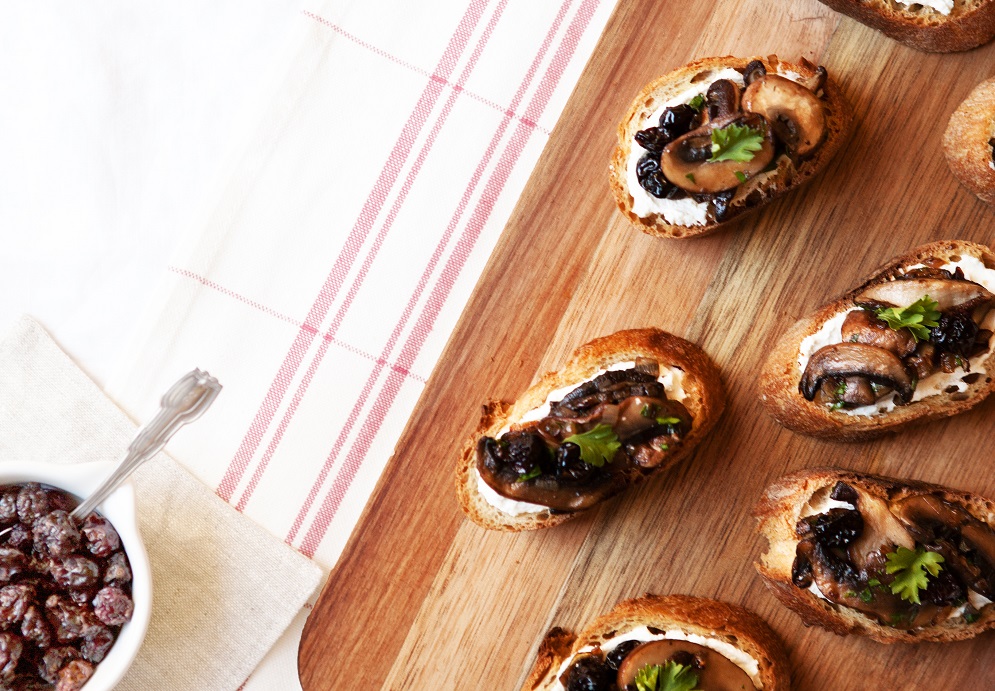written and photographed by Carly Diaz
Wild and untamed, huckleberries lure foragers back to their favorite spots— well-kept secrets that they return to year after year. At the height of summer, the berries re-emerge in recondite areas across the western United States and Canada.
Perhaps part of the allure of huckleberries, aside from the sweet-tart flavor that is an ode to summer, is their difficulty to obtain. Huckleberries are not commercially cultivated and cannot be found on the shelves of a supermarket. This elusive berry has a short growing season, but can be bought at farmers’ markets for a limited time thanks to the efforts of local foragers. The most common encounters with the purple blue berry come in the form of desserts at restaurants or jars of preserves at gift shops.
For the most dedicated and tenacious huckleberry enthusiasts, there is another option: grow them yourself. Eva Kosmas Flores, a photographer and food blogger, tends a garden at her house on the outskirts of Portland, which contains three huckleberry bushes that she planted herself from seeds.
Growing up, her parents had a lush vegetable garden that she helped tend, which cultivated her fascination with gardening.
“It still amazes me that I can put a tiny seed in the ground and later have a giant plant in front of me heavy with fruit, and that it all came from that one tiny seed,” Kosmas Flores said. In the summer, she only has to slip out the back door and into her garden to harvest enough berries for her latest recipe. Minutes later, she is back in her kitchen, washing the berries and lighting the stovetop in preparation.
While often compared to a blueberry, this fruit has a complexity all its own. For the petite, dwarf huckleberries with a redblack hue and the large, bright blue Cascade huckleberry, the signature flavor is a complex balance of sweet and tart. The mountain huckleberry grows in high altitudes rife with acidic soil and is large and dark, with tones varying from deep red to purple black. Favoring the lower elevations and climate of the southern coast of Oregon, red huckleberries grow in delicate clusters and have a sour-tart flavor with a hint of sweetness. According to the United States Department of Agriculture, twelve different species of huckleberries grow throughout Oregon, each with a distinct appearance, flavor and preferred altitude to put down roots.
Huckleberries can be folded into baked goods, tossed in a salad or made into juice, dressing, or a rub for meat. A great source of vitamin C and antioxidants, freezing huckleberries ensures that the taste of summer can be enjoyed throughout the year.
For dedicated huckleberry enthusiasts, consult Growing Western Huckleberries, by Danny L. Barney, a horticulturist with the U.S. Department of Agriculture Research Service. The book gives recommendations and tips for those wishing to grow their own huckleberries.








Thank you all for your clarifications and additions to this article! We’ve drawn the author’s attention to these comments. All the best, 1859
While about a year late on my part, Elizabeth Grossen is dead on. The huckleberries people compare to blueberries are the wild huckleberries that are related to blueberries… Vaccinium membranaceum, Vaccinium deliciosum, Vaccinium ovalifolium, and Vaccinium ovatum…. hopefully you ran a correction?
The plant she is growing in her garden and the pictures in this article is Garden Huckleberry Solanum sp. AKA Nightshade. This is not true Huckleberry (Ericaeae) and the Nightshade shouldn’t be eaten raw. Both Nightshade and true Huckleberries are found in the wild here. Here is an OregonLive article that discusses Garden Huckleberry: http://www.oregonlive.com/hg/index.ssf/2009/01/garden_huckleberries_have_thei.html. Your article appears to be confused as to which is which.
These huckleberries are much larger than the ones that grow wild around Bandon. Are they a different variety?